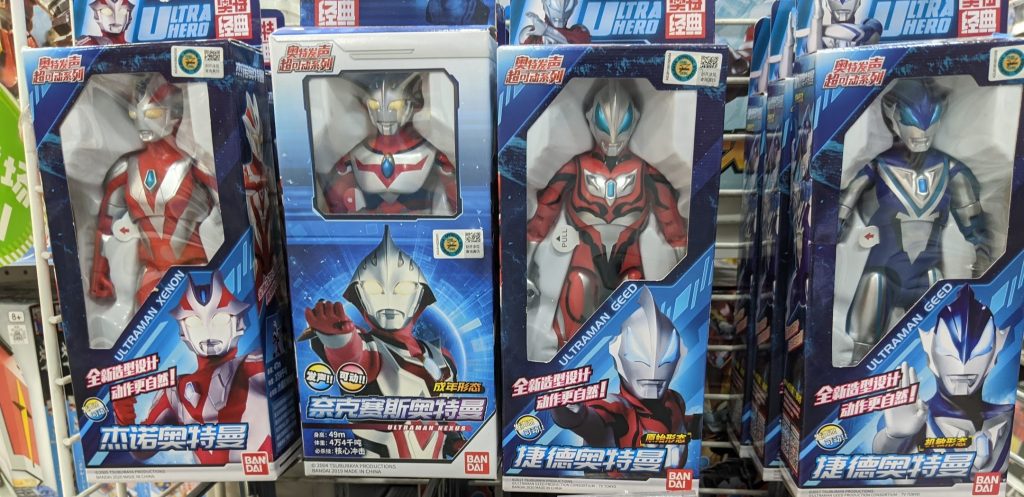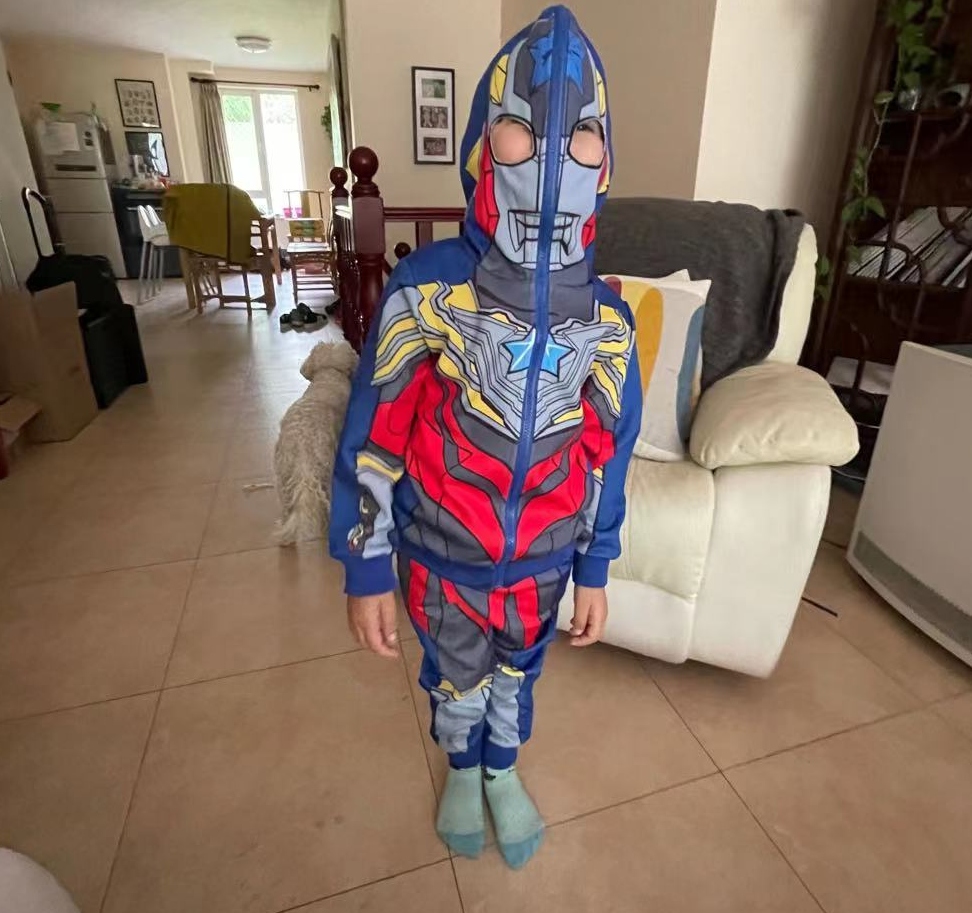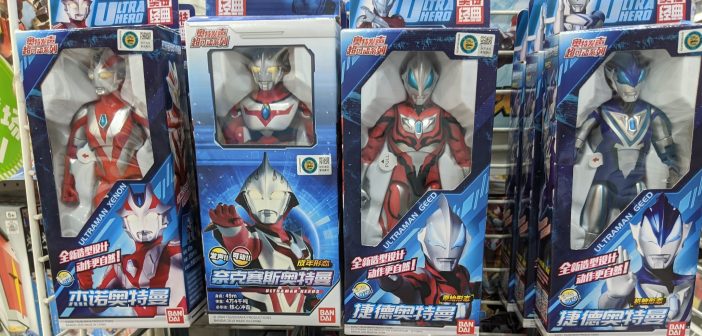I was introduced to Ultraman last fall while writing about superheroes. Callum Crawford-Dionco, one child from a set of Irish-Filipino twins, submitted his photo for our superheroes blog and said he loves Ultraman because “he can fly, fight big monsters, and ask for help from his other Ultraman friends.”

Callum as Ultraman and his sister Freya as Lady Miraculous
After that first encounter, I started seeing Ultraman everywhere: in Jenny Lou’s, on a dedicated wall at the toy store, on posters and artwork. His costume reminded me of Ant-Man, which is no surprise since the director of Marvel’s redemption movie admitted to basing Ant-Man’s character design on Ultraman’s.
My own 7-year-old saw the picture above and asked why I was writing about Ultraman. I hadn’t ever heard him talk about the superhero before, but he rattled off these facts he’d learned from a friend at school: “He’s very huge so he can fight the huge bad monsters, he has big power-ups, and you can play with his card game.”
The “huge bad monsters” he fights started with Godzilla and the special effects helmed by Eiji Tsuburaya, who had a hit with his Godzilla series and soon created Ultra Q and Ultraman, two series in which giant heroes were more than a match for Tsuyburaya’s famous monsters.

Zeus Zhou, an editor for our sister magazine theBeijinger and my personal go-to when I have a question about China’s comics culture, thinks one of the biggest reasons why Ultraman has been so popular in China is “because the Ultraman series was aired in China from the 80s, and for a quite long period of time it was the only show on TV where you get to see the real humans battle with the monsters (kids didn’t know that the monsters were played by actors and actresses as well back then I think). And it is a time when kids are curious about astronomy, archaeology, and biology, so a superhero from the outer universe battling with prehistoric or alien monsters sure would sound exciting for them.”
Franco Crawford-Dionco, the father to our costumed Ultraman above, thinks that Ultraman’s power and strength appeal to his young son, “especially with the different gadgets that come with it and all the classic retro beaming of lights and the transformation… For international one he likes Spider-man, but Ultraman is still at the top of his list. We enrolled him with his sister in a Kung Fu class because of Ultraman.”

Callum’s latest Ultraman costume!
Part of Ultraman’s endurance with kids – and even into adulthood – might be the very real and tangible positive impact that the franchise has had on China’s youth. For example, earlier this year the charity organization Childream joined forces with Ultraman’s creative team, Tuburaya Productions, to bring the famed superhero to a young boy suffering from leukemia. This was a purposeful move on the part of the franchise owner, and Zhou believes it left a good impression on communities and netizens. But even though the show aired many years ago, Zhou thinks that “even after the audience became adults, they can still feel related or empowered by the show sometimes, especially in a world [where]the pressure from work is unbreathable and social media is filled with unjust incidents.”
It isn’t just about fighting monsters and trading cards, it seems. Although isn’t that the whole point of a superhero – to show us that even the worst monsters can still be slain?
KEEP READING: How “The Bad Guys” Can Teach Kids Empathy
Images: Franco Crawford-Dionco, Cindy Marie Jenkins




